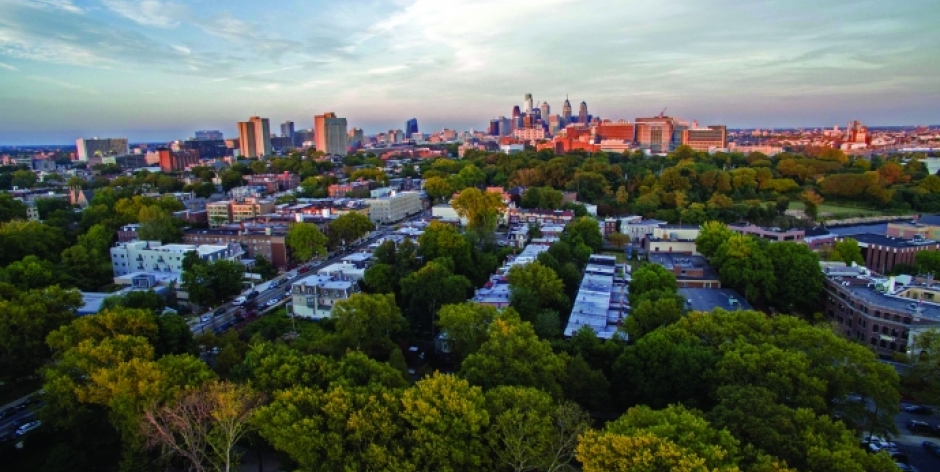
Visitors / Employees
Reflections from UCD’s Chairs
Over the course of the past year we’ve shared stories about the local restaurants, organizations, people and places that have helped shape University City into a thriving community since University City District’s foundation in 1997. We’ve also focused on the men and women at UCD who have fully embraced the organization’s mission, creating programs to improve the physical fabric of the community and offering opportunities to neighbors to ensure they too could benefit from the district’s rapid transformation.
In this, our final entry in our 20 Years, 20 Stories campaign, we share the words spoken by two men integral to UCD’s continued success: founding UCD Board Chair and current Drexel President John Fry, and current Board Chair and Executive Vice President for the University of Pennsylvania Craig Carnaroli. Both spoke at our State of University City event in November where we celebrated the past 20 years of accomplishments and looked forward to the limitless possibilities of the future. What follows are shortened versions of each speech.
John Fry
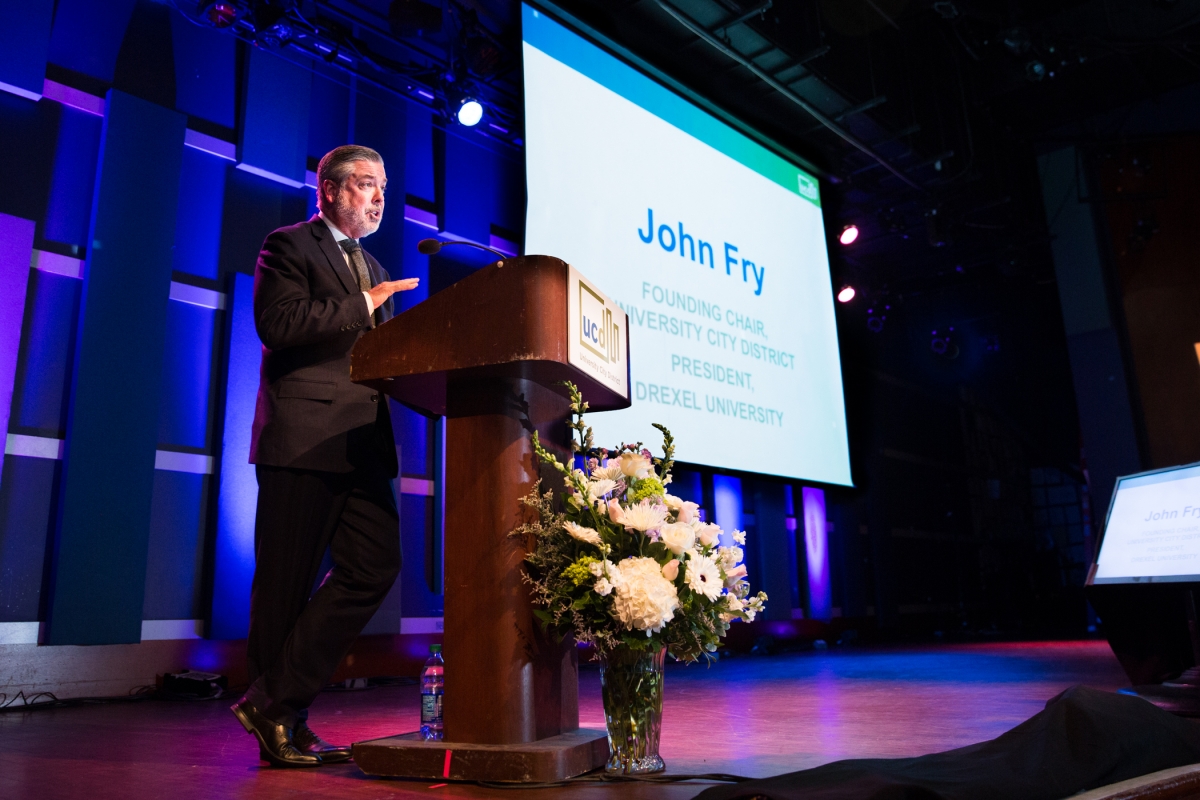 It is hard to believe that 20 years have passed since the founding of the University City District. But then again, it is hard to imagine University City without the UCD.
It is hard to believe that 20 years have passed since the founding of the University City District. But then again, it is hard to imagine University City without the UCD.
The UCD was modeled in spirit after the Center City District, which was the catalyst to the rebirth of Center City. The idea for the UCD was hatched over a dinner with Paul Levy, who is still making history as the head of the Center City District, and Tom Seamon, the Vice President for Public Safety at Penn, who I recruited to the university from his role as first deputy police commissioner.
After that conversation with Paul and Tom, I asked my trusted Penn colleague, Tom Lussenhop, to undertake a feasibility study to create what would eventually become the blueprint for the University City District.
And then I hit the road, literally going door-to-door to over 25 institutions and individuals, asking them to become founding members of UCD and to pledge five years of financial support. In the end, almost everyone said yes, and in doing so took a real chance. Approximately $22 million was pledged to support the first five years of UCD’s operations. Amazingly, the UCD went from a dinner conversation to reality in about nine months.
Our founding Executive Director Paul Steinke was the driving force in getting the UCD off the ground, and making it a highly effective business improvement district right from the start. Paul was blessed with a small but excellent staff, including Eric Goldstein, who later became Paul’s successor. But beyond Paul and Eric’s inspired leadership, the secret to UCD’s success involved several factors:
First, membership was voluntary. No one was compelled to join or provide financial support. You only joined if you believed.
Second, the community was well represented, with the leaders of all the major neighborhood organizations invited to take a seat on the board.
And third, every board member, regardless of their financial contribution, had one vote.
The founding principles were simple: Clean, safe and well-lit streets. And no graffiti. That has served the University City District well over the years – even as it has grown in size and scope.
While Paul and Eric did an amazing job of building the UCD, and establishing its credibility with the community, Matt Bergheiser – one of the most admired and effective leaders in Philadelphia - and his team have taken the UCD to an entirely different level.
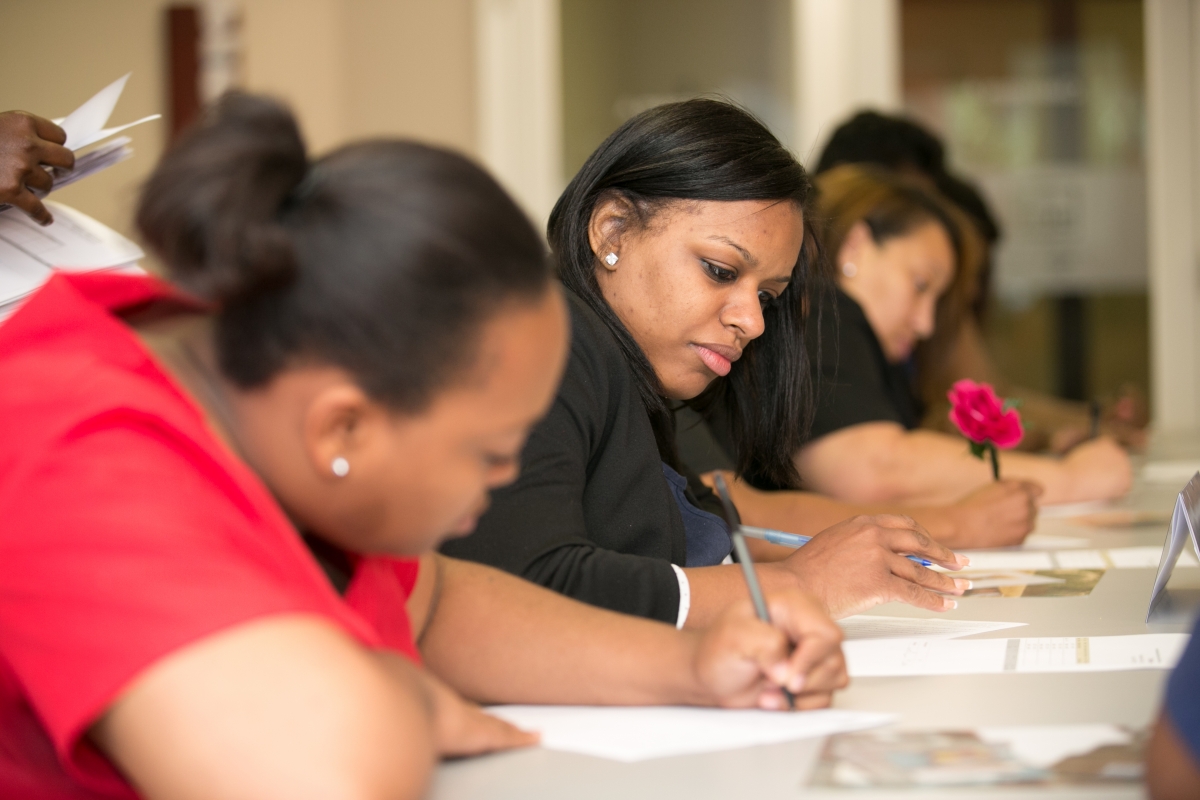
Today’s UCD now offers so much more, including job training, through its nationally known West Philadelphia Skills Initiative; rehabilitating abandoned buildings; and becoming an expert maker of memorable urban places, such as The Porch, and so much more.
It’s safe to say the UCD has more than lived up to its motto of “Changing places, changing lives.”
Throughout these 20 years, the partnerships and friendships that were forged early on have stood the test of time, which in the long run may be the most profound contribution of the UCD – people and institutions got to know and value each other, and collaboration started to occur.
That is a credit to many past and present leaders at Penn, Drexel, University of the Sciences, CHOP, Penn Medicine, Amtrak, University City Science Center and Campus Apartments, as well as community groups in Powelton Village, Spruce Hill, Garden Court, Walnut Hill and Cedar Park.
The UCD board, now led so expertly by my friend and colleague, Craig Carnaroli, has provided countless hours of their time and wise counsel.
Thank you to those who have served the UCD as board members and staff over the years. And special thanks to those who were there from the beginning: Maureen Rush, Penn’s Vice President for Public Safety; Barry Grossbach of Spruce Hill; David Adelman, CEO of Campus Apartments; Joe Trainor, CFO at the Wistar Institute; and Lindsay Johnston, owner of Common Ground Realtors. A big thanks also goes to City Councilwoman Jannie Blackwell and former Mayor Ed Rendell for their encouragement and support.
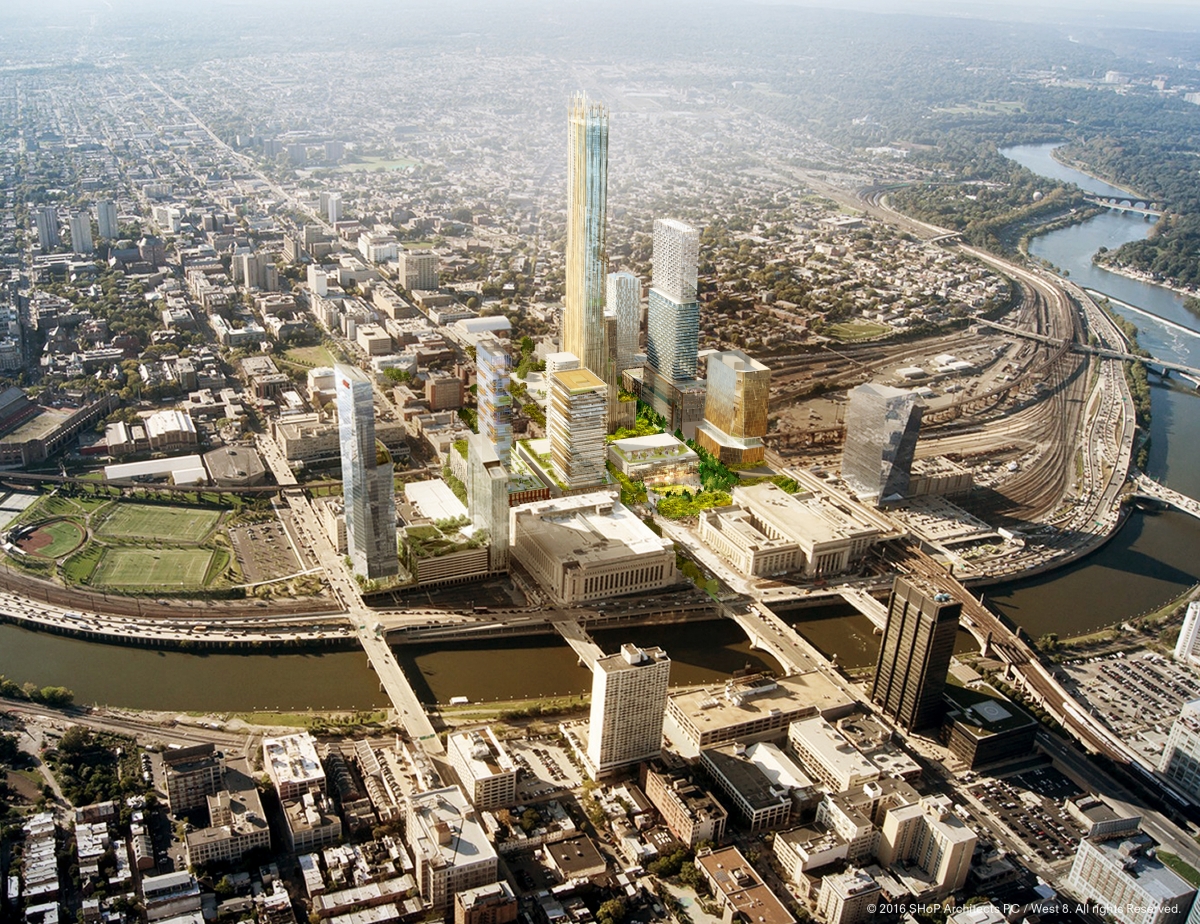 While it is wonderful to look back on the UCD’s accomplishments, what’s more important now is to look to its future.
While it is wonderful to look back on the UCD’s accomplishments, what’s more important now is to look to its future.
So, let’s take a moment to imagine what University City will look like in 2037 – guided by one of the finest business improvement districts in the United States. First, I see a University City where innovation and inclusion combine to further strengthen the competitive position of our institutions, while creating even greater opportunities for residents who will live in increasingly safe, diverse and vibrant neighborhoods.
The Brookings Institution report released in May envisioned an innovation district stretching from University City to the Comcast towers. While other cities are scrambling to compete in the challenging race to be a world-class metro, we already enjoy this natural innovation district that positions us so well for the future. The challenge now is to build on our strengths by creating more startups, attracting more investment, and growing more job opportunities for everyone.
At the same time, we must continue to bolster our primary and secondary schools and increase educational opportunities for all University City residents. Creating the infrastructure to provide cradle to career opportunities is where inclusion meets innovation. The Penn Alexander School is a wonderful example of a partnership between Penn and the Philadelphia School District that benefits everyone. Drexel has also teamed up with the School District. A $30 million grant from the Education Department and another $76 million in matching funds are being used for education, health, safety and family support services at seven area schools in the Promise Neighborhood.
And in partnership with the District, we now are teaching 180 students who are in the 5th and 6th grades of the Science Leadership Academy Middle School, or SLAMS, now located at the Dornsife Center, and one day in a new building at 36th and Filbert that will have 800 students from SLAMS and the Powel School. This effort goes hand in hand in helping to prepare University City residents for jobs in the new economy.
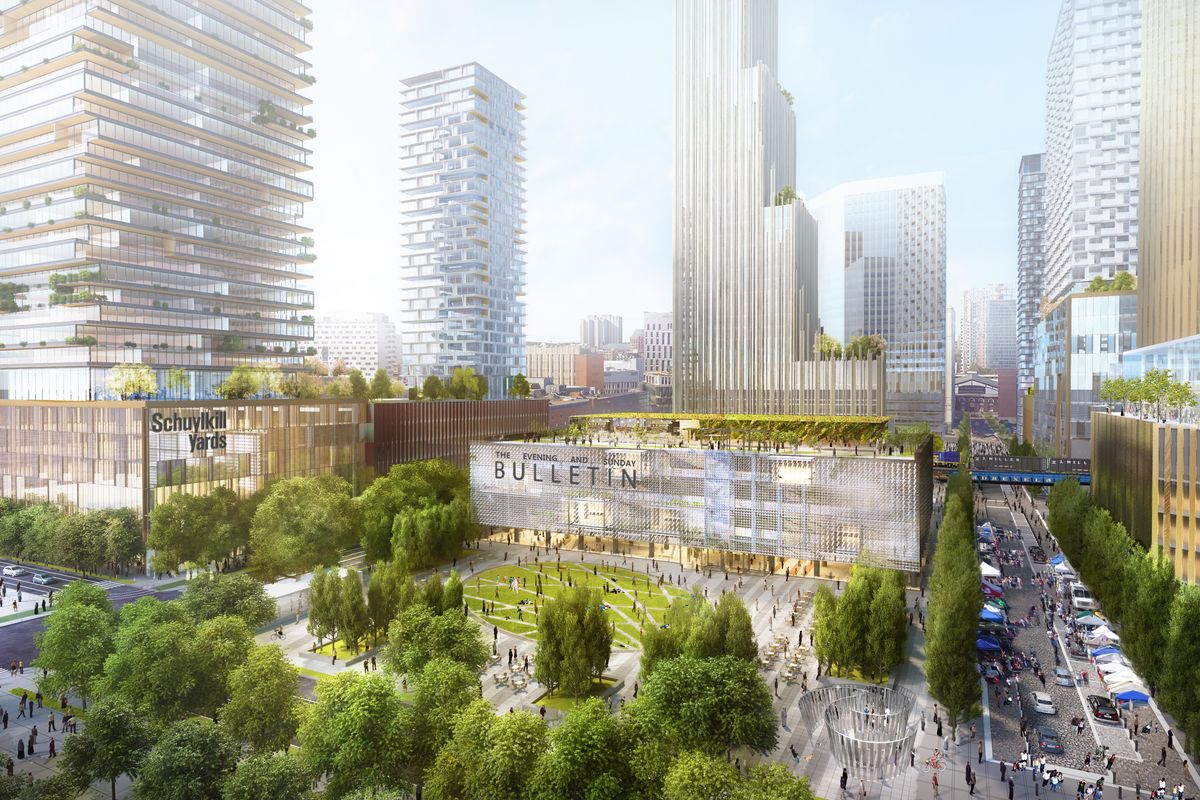 Second, as we look to 2037, University City will see the completion of Schuylkill Yards, while watching the 30th Street District Plan take shape. Schuylkill Yards is a $3.5 billion innovation district on 14 acres surrounding the gateway to Drexel’s campus and 30th Street Station. The development by Brandywine Realty Trust will include up to 7 million square feet of entrepreneurial space, research facilities, corporate offices, residential and retail development, cultural venues and wonderful public space. It will be anchored by the 1.3 acre Drexel Square, which broke ground yesterday.
Second, as we look to 2037, University City will see the completion of Schuylkill Yards, while watching the 30th Street District Plan take shape. Schuylkill Yards is a $3.5 billion innovation district on 14 acres surrounding the gateway to Drexel’s campus and 30th Street Station. The development by Brandywine Realty Trust will include up to 7 million square feet of entrepreneurial space, research facilities, corporate offices, residential and retail development, cultural venues and wonderful public space. It will be anchored by the 1.3 acre Drexel Square, which broke ground yesterday.
As Schuylkill Yards takes shape, the 30th Street District Plan will start to be implemented with an elevated platform over the Amtrak and Septa railyards, which will create 16 million square feet of new space. And the jewel in the crown will be a fully renovated 30th Street Station that will be the envy of the transit world.
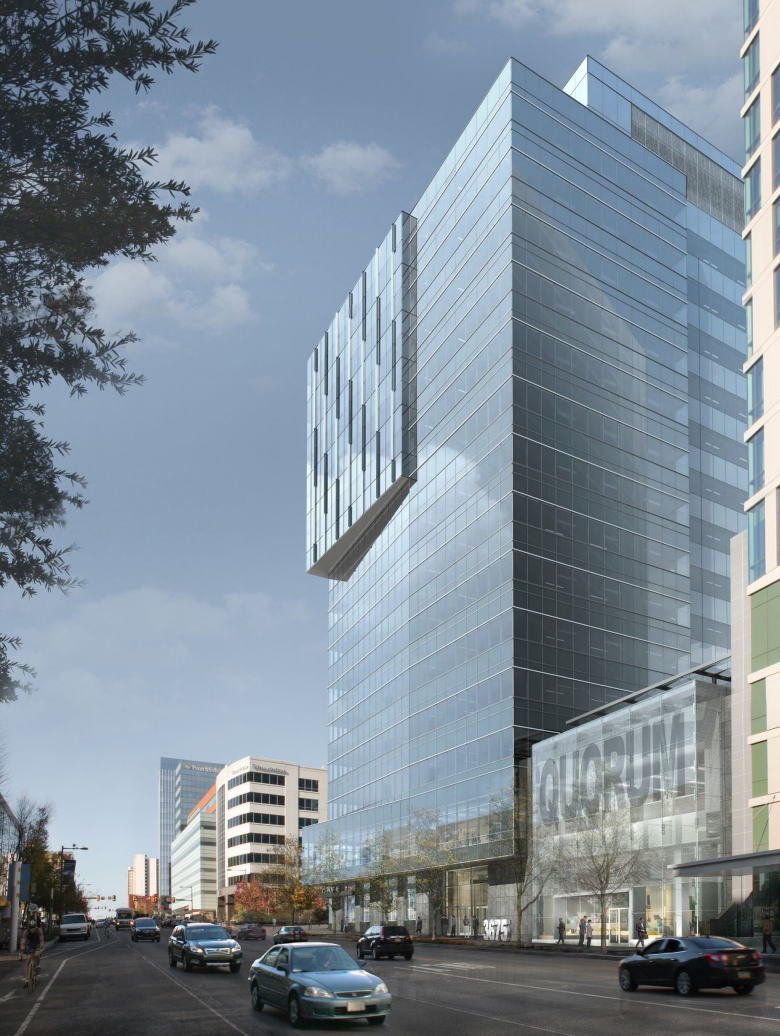 If we leave 30th Street Station and go west, you will witness the expansion of uCity Square, led by the University City Science Center and Wexford Science and Technology. These expansion plans call for 10 new buildings, for an additional 4 million square feet, as well as over 700 apartments, all on 14 acres with a development investment of over $1 billion.
If we leave 30th Street Station and go west, you will witness the expansion of uCity Square, led by the University City Science Center and Wexford Science and Technology. These expansion plans call for 10 new buildings, for an additional 4 million square feet, as well as over 700 apartments, all on 14 acres with a development investment of over $1 billion.
As we gather today, 3675 Market Street, a 14-story, 345,000-square-foot building, is progressing towards completion next fall, with Cambridge Innovation Center as the anchor tenant.
Meanwhile, you will see the continued growth of Penn Medicine and CHOP into the most powerful medical complex in the country, while across the District you will see unprecedented commercialization and technology transfer occurring at Pennovation, ic@3401 Market, and on the campuses of the Wistar Institute, the University of Pennsylvania and Drexel.
And finally, in 2037 we will be able to walk down a reimagined Woodlawn Avenue commercial corridor – anchored by the University of the Sciences – as well as the Lancaster Avenue retail corridor, destined to become one of Philadelphia’s most dynamic and eclectic neighborhood retail districts.
And if it all goes the way I envision, the keynote speaker at a future University City District event will be Amazon founder Jeff Bezos. As you know, Philadelphia is competing to become the home for Amazon’s second headquarters. Landing Amazon would be a game-changing event for Philadelphia and perhaps for University City. Amazon expects to create 50,000 high-paying new jobs and spend $5 billion to build 8 million square feet of office space.
The very fact that Philadelphia is in the running to land Amazon is a tribute to the University City District. The UCD helped create the necessary conditions to attract a dynamic company like Amazon – and many other businesses both big and small – to Philadelphia and University City.
That would have been hard to imagine 20 years ago. But it isn’t now - because of everyone here tonight. Your dedication, commitment and generous support helped build a great organization from scratch, an organization that has made a profound impact on the lives of so many people, each and every day.
In doing so, you have made University City the best version of itself. But the true best is yet to come. I can’t wait to see what we will be able to accomplish by 2037. By working together, to make it better.
Craig Carnaroli
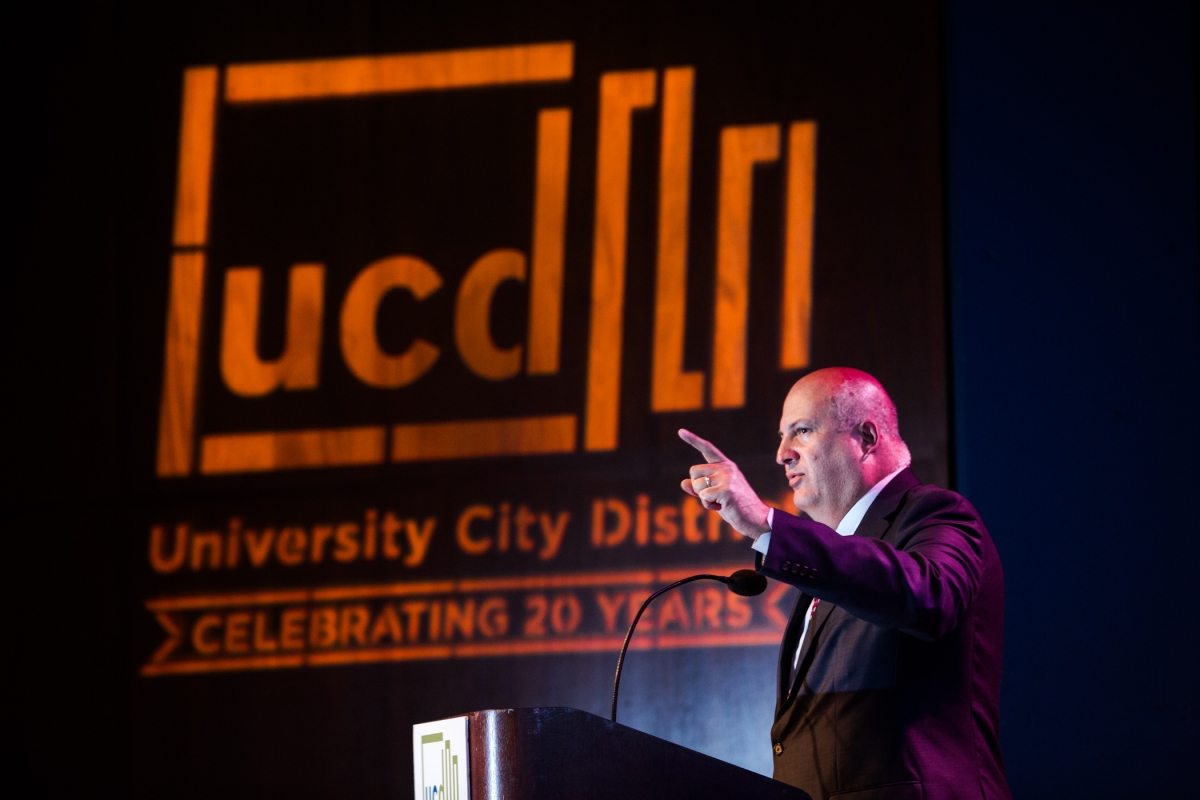 I am delighted to see so many friends and colleagues to celebrate the 20th anniversary of the UCD. You know the pattern of these events. They rely on speeches. You have heard from Matt Bergheiser, who has taken the organization from its founding principles to a new place, a place that is recognized nationally as one of the most successful and unique special services organizations.
I am delighted to see so many friends and colleagues to celebrate the 20th anniversary of the UCD. You know the pattern of these events. They rely on speeches. You have heard from Matt Bergheiser, who has taken the organization from its founding principles to a new place, a place that is recognized nationally as one of the most successful and unique special services organizations.
And you have heard from President Fry, a great friend and mentor, who had the vision 20 years ago, to create this organization.
In planning the event, Matt suggested that I share with you some short stories of what I am most proud of working with UCD. In thinking about the vignettes I wanted to share, I realized that Thanksgiving is just two weeks away. So rather than just share my pride, I want you to know what I am thankful for relative to the University City District.
First and foremost, I am most thankful to have such wonderful colleagues to work with on the UCD Board. One compliment I have to give my fellow board members is that they practice good governance – they are engaged, ask good questions, but leave the running of the organization to our talented and dedicated staff.
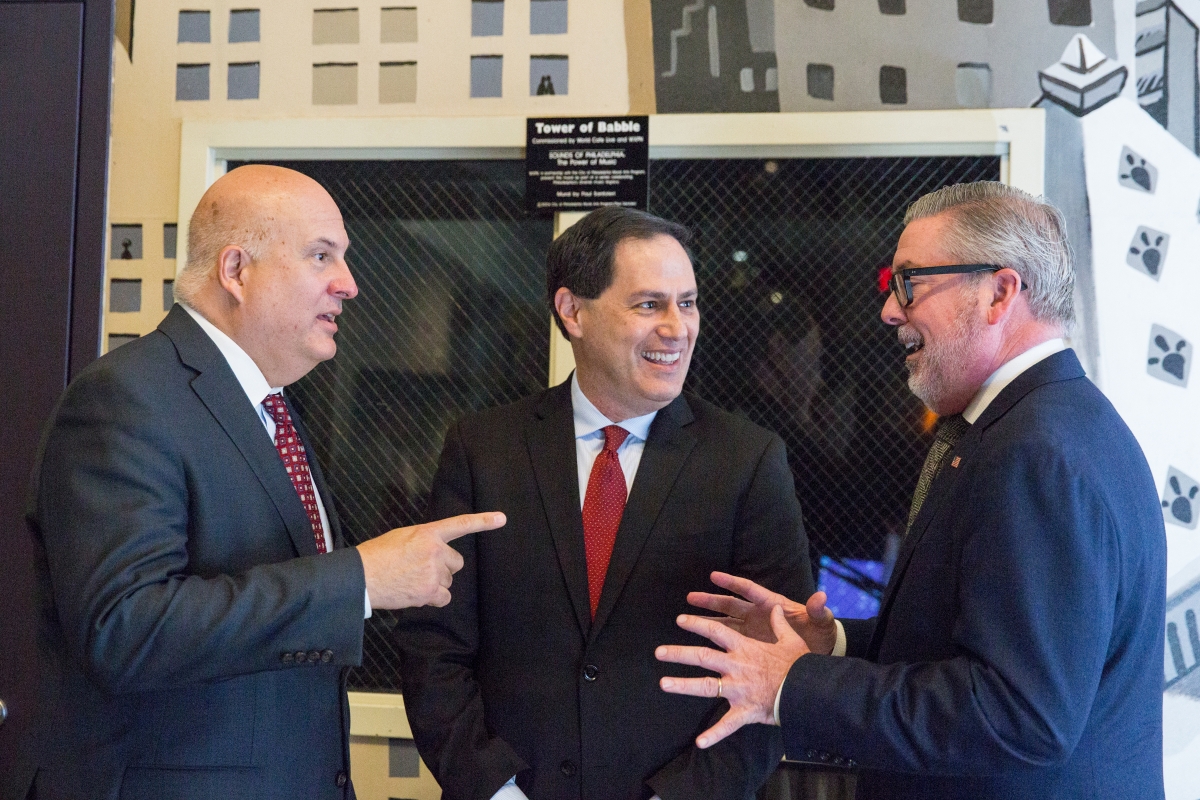 I am thankful for Andrew Wheeler. Andrew Wheeler, you may ask? Yes, Andrew Wheeler from Diversified Search. Working closely with our search committee, Andrew brought us Matt Bergheiser at literally the very last minute. We are so fortunate to have such a talented and dedicated leader. Matt, on behalf of the entire Board, we are proud of all your accomplishments and all that is yet to be accomplished.
I am thankful for Andrew Wheeler. Andrew Wheeler, you may ask? Yes, Andrew Wheeler from Diversified Search. Working closely with our search committee, Andrew brought us Matt Bergheiser at literally the very last minute. We are so fortunate to have such a talented and dedicated leader. Matt, on behalf of the entire Board, we are proud of all your accomplishments and all that is yet to be accomplished.
I am thankful for the UCD staff and their creativity to expand the mission of the UCD to powerfully impact the community. Through Project Rehab, which revitalizes abandoned housing, UCD has unlocked nearly $21 million in real estate value, brought over 120 units to market, and helped owners access over $14 million in financing. Through the Skills Initiative, 785 adults and youth have been touched through the job training, internships, and workshops, generating $15.4 million in wages. And, through UCD’s focus on public spaces, concrete deserts have and will evolve into dynamic, inclusive and thriving destinations such as the Porch and coming soon, The Trolley Portal.
And finally, I am thankful for the partnerships that have emanated from my association with UCD. At the governmental level, Jannie Blackwell has been a steadfast supporter and we appreciate all she does for the community.
After 20 years of being in business, the University City District thrives because it understands partnerships. The anchor institutions of University accept the role that they are stronger together. They pooled their money to finance a new organization that will supplement urban management. Speaking of funding, since its founding the institutional contributors have invested over $75 million in the UCD, and these funds have leveraged approximately $13 million in external grant funding. Put another way, for every dollar invested by the anchor institutions, another 17 cents in philanthropy was attracted and invested in University City.
I believe it was our founder at Penn, Ben Franklin, who said, we will all hang together, or if not, we will certainly hang separately. Now, Ben was speaking about war and revolution, so let’s not be too dramatic.
However, with UCD’s founding, and its reliance on institutions voluntarily contributing time, money, and resources for the greater good—that was a revolutionary way of thinking.
The partnerships among anchor institutions are still strong, resources are flowing, and now we are beginning to see private sector companies and individual civic leaders accept a role in this effort as well.
They understand that there is a responsibility for the private citizen helps pay for the public life.
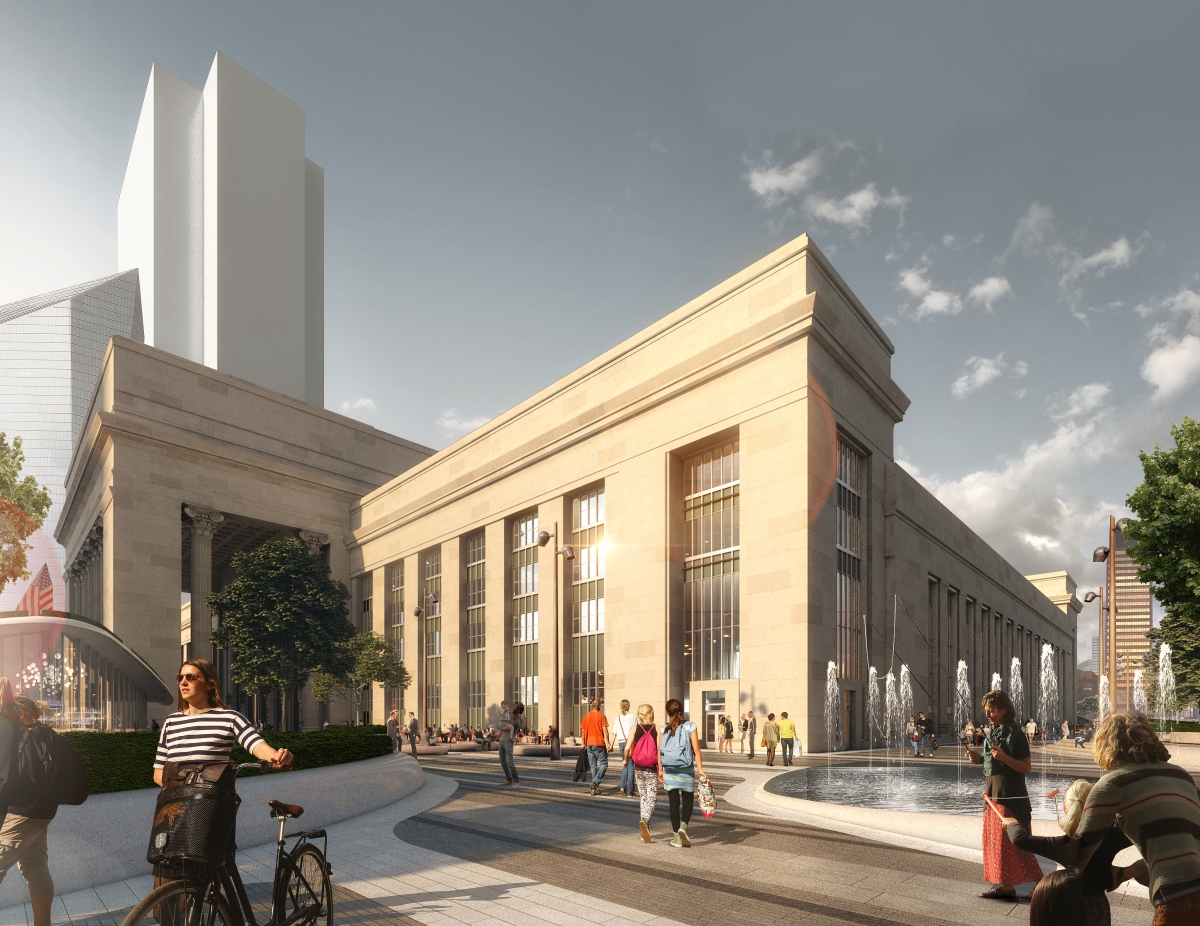 New development abounds. Population rises and crime goes down. We are seeing skyscrapers climb into the sky. And now Iron Chefs Bobby Flay and Jose Garces have restaurants one block from each other.
New development abounds. Population rises and crime goes down. We are seeing skyscrapers climb into the sky. And now Iron Chefs Bobby Flay and Jose Garces have restaurants one block from each other.
We have a great turnaround story. And the story continues.
What about jobs? Workforce development? Helping individuals from the community improve their chances to contribute?
And so, this is when I would come to the end of the story. But frankly, the ending cannot be told, because we are still writing the future. I am personally very bullish on the future. We have great leadership with dedicated board members. We have great leadership in Matt Bergheiser and his entire staff and team.
We have committed anchor institutions, in partnership with private individuals. And they are partnered with companies, and we are all digging deep to collaborate on ways that ensure our community is strong.
Being the chairman is an honor. Living in the community is a privilege. I cherish both. And I salute the past, present and future partners of the UCD.
We are thankful to John and Craig for their remarks at our State of University City event, and more importantly, for their leadership as the Chairs of our Board of Directors. Without their contributions, guidance, and hard work, UCD would not be the organization it is today.
Thank you for reading our series, and helping us celebrate 20 remarkable years in the district.


